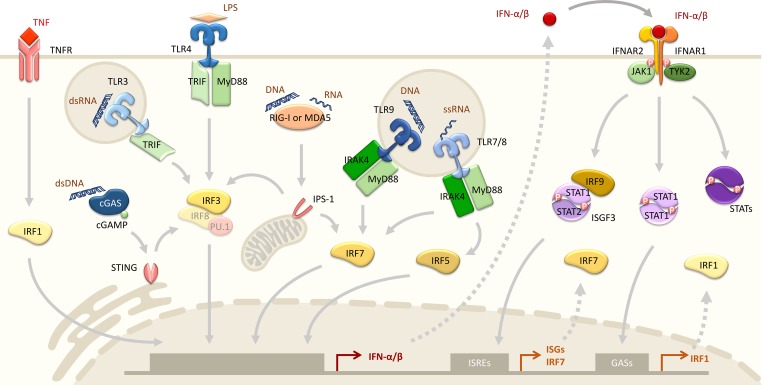Figure 1.
Simplified schematic of type-I IFN induction and major IFNAR signaling pathways. Type-I IFNs are induced by nucleic acid or LPS activation of a variety of PRRs, including cytosolic nucleic acid sensors and TLRs. Activation of PRRs results in nuclear translocation of IRFs, which bind to the promoter region of type-I IFNs. IRF3-mediated IFN expression could be induced by STING (via cGAS), RIG-1, MDA5, TLR3, and TLR4 (through TRIF) while ligand engagement of TLR7/8 and TLR9 activate IRF7 and/or IRF5 via MyD88. Cytokines such as TNF can also induce type-I IFN expression through the TNFR-IRF1 signaling pathway. Secreted type-I IFNs bind autocinely/paracrinely to the IFNAR complex composed of IFNAR1 and IFNAR2, which consequently triggers cross-phosphorylation of TYK2 and JAK1 and activates different STAT homo/heterodimers controlling distinct transcription programs. ISGF3 consists of STAT1, STAT2, and IRF9 and binds to IFN-stimulated response element (ISRE) sequences upstream of ISGs and IRF7, while STAT1 homodimer induces IRF1 and pro-inflammatory gene expression via GASs binding. dsRNA, double-stranded RNA; ssRNA, single-stranded RNA.

